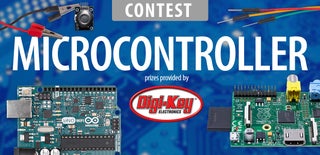Introduction: Instructions to Build 8x8x8 LED Cube
This LED Cube is a cool device that enables you to see in three dimensions, and has 512 LED's for 8 layers of 8 rows and 8 columns (8x8x8).
This work requires a lot of soldering. It will be very interesting for sure. You can just follow my instructions to complete this build.
LED cube kit can be purchased from this link
Step 1: Gather the Requirements
- LED cube kit from gearbest
- Soldering Iron and consumables (flux and lead)
- steel scriber
- A4 sheet paper
- Cardboard or plywood (to make template)
- Pencil for marking
- Sticking tape
- 5mm drill bit
- Portable electric drill
- scrap piece of plastic sheet with thickness of 2 to 3 mm
Step 2: Draw a Table (7x7) With Squares of 2 Centimetres Each Sides
This is the first step in preparing the fixture. I may have more squares but a table with 7 rows and 7 columns were enough.
Step 3: Stick the Paper to the Cardboard or Ply-wood
Step 4: Make Indentation With Steel Scriber for Easy Drilling
Step 5: Use 5 Millimetre Drill to Make Holes
To accommodate the 5 mm LED's
Step 6: Insert the LED's & Make Sure the Cathode Terminal Is Aligned Out Side
Cathode terminals can be easily identified as shorter
Step 7: Trim and Bend the Cathode Terminals
Step 8: Solder All the Cathode Terminals
Step 9: Bend the Anode Terminal Using a Spacer of Thickness 2 Millimetre
Step 10: Solder the Anode Terminals
Step 11: After Soldering, Carefully Remove the LED's From the Fixture
Step 12: Prepare 8 Units in Total
Step 13: Carefully Insert the LED's to the Female Header Pin's on the Board
Step 14: Connect the Common Cathode Terminals of Each Layer (please Find the Notes in the Image)
Step 15: Connect All the Common Cathode of Each Layer to the Hoard
Step 16: The Build Is Complete Now. You Can Power Up the Cube (5 Volt or Through USB)
Step 17: Link to the Software and Program Codes
github.com links Click here (USB to TTL drivers, keil, STC ISP and others)
gearbest links Click here (.hex and c files)
Step 18: This Video Will Be Helpful

Participated in the
Microcontroller Contest 2017











